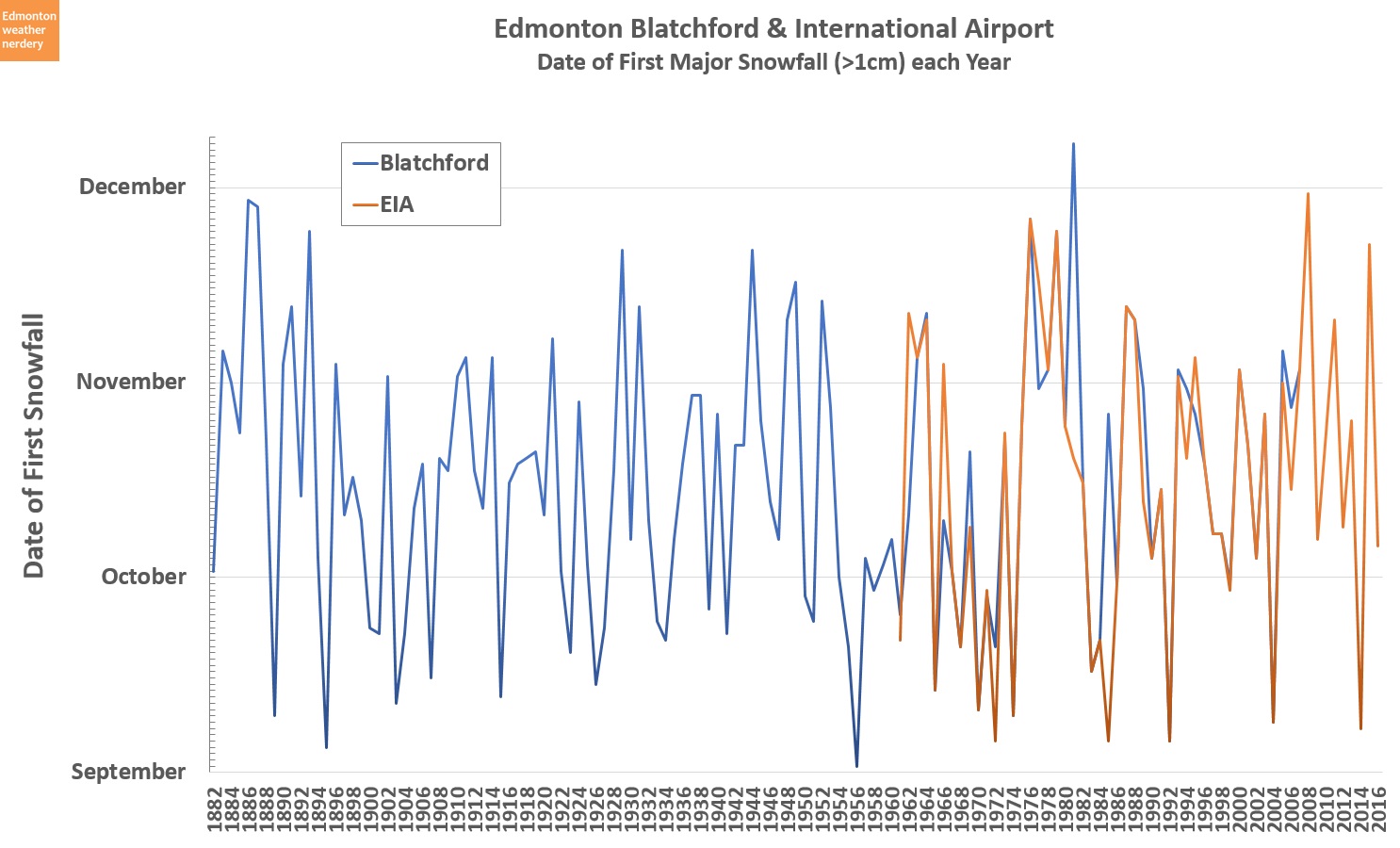But we can't really talk about Edmonton weather without talking about snow, so this will cover some of the basics. As always, full explanations and information are available in the links to the original posts.
First Snowfall
The first snowfall can show up anytime from September onward (and even occasionally in August, once every century-or-so). In the last 20 years the breakdown is roughly 14% of the time for September, 55% for October, 27% for November, and 5% for December.
First Lasting Snow
But if we do get an early snow, it will usually melt off before winter really starts. The earliest that we've recorded lasting snow was October 16.
More typically, snow doesn't start to hang around until November, and in recent years it's often been late-November.
Yearly Snowfall Totals
Over the course of a winter we'll typically get between 100-150cm of snow. There are some low years like 2015-2016 around the 50cm mark, and high years like 2002-2003 up above 200cm. But the average of about 130cm per year has been fairly consistent for the last century, for both Blatchford and the International.
Snowy Months
Edmonton's snow-season typically lasts from October through April, and into May about half of the time.
No month is a particular standout for snow, with November, December, January and March all averaging around 20cm. Of the true winter months February is a bit lower than all the rest.
Compared to some other winter cities, the amount of snow that Edmonton gets is very close to Winnipeg, a touch below Calgary, and well below Montreal.
Snowstorms
Most of the time when it snows in Edmonton, we don't actually get very much. About 85% of the time it snows less than 5cm, and 95% of the time it's less than 10cm. But that other 5% of the time means that about 2-5 times each winter we'll get a storm of 10cm or more.
Storms with 20cm of snow happen about every-other-year, and 30cm storms are very rare - the most recent one was 35.2cm on May 5th & 6th 2003.
The amount of snow on the ground can vary a lot during the year, but also depending on the year. Our very snowy years can reach 50cm, but others might top-out at 20cm, and 2007 was the recent lowest only reaching 7cm.
We get little melts throughout the winter, but mid-March is where it really starts to drop. The snow usually completely disappears sometime in April - anywhere from the start of the month to the very end.












Really informative charts. Need up to date info though. I know it's tough but I was looking for 2017-2018 winter snowfall accumulations.
ReplyDeleteSo we here in Toronto Canada had are first little bite of snow
ReplyDeleteThe history of Toronto's first snowfalls is here: https://public.tableau.com/shared/JSGW5DHMR?:display_count=y&:origin=viz_share_link
ReplyDeleteThe average first snowfall is around November 10th, and so the past 3 years have all been a little early with 2020 on November 1st, 2019 on November 6th, and 2018 on October 27th.
(There's an annoying gap from 2003-2013 when there are no records.)